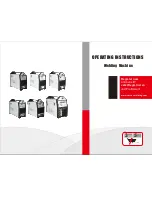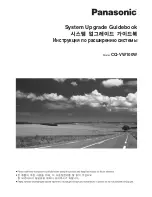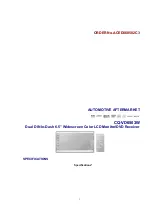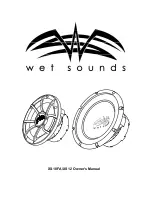
Series R y ST. Manual de Usuario /
R and ST Series. User's Manual
72
7. USE
SWITCH ON/OFF
Switch your sound system on from back to front. Thus, switch
on the amplifiers last. Switch sound sources (CDs, turntables)
first, then your mixer, then your processors and crossovers
and finally the amplifiers. If you have more than one amplifier,
switch them on sequentially, one at a time.
Follow the reverse order when powering down, and switch off
the amplifiers before any other element on your sound system.
AMPLIFIER POWER
In general, it is recommended that you use an amplifier with
an output that is 100% to 150% of the speaker's average
(RMS) power rating. That way we have headroom for the
dynamics of real music and vocal signals, and at the same
time deliver a cleaner signal to the speakers that will result in
a more reliable system. Avoid using too small an amplifier.
AMPLIFIER CLIP
The clip light of your amplifiers should never be on
continuously. This will distort the signal and may damage the
speakers. In fact, severe clipping is an easy way to burn a
speaker’s voice coil. At most, the clip light could blink
occasionally. When clipped, signals sound distorted and
produce listening fatigue quickly. If you cannot get the desired
level without overloading the amplifier, use a larger amplifier
or consider expanding your system.
AMPLIFIER LEVEL CONTROLS
Although related to output power, an amplifier channel's level
control it is not a direct representation of it. Thus, we can
have maximum output power with the level at mid position.
Similarly, we may have the level controls at maximum and not
have maximum output if our source signal is not hot enough.
One way to use an amplifier's volume controls, particularly for
fixed installations, is to set them such that when the mixer’s
faders are at their maximum level, we are just below clipping
level on the amplifier or clipping very occasionally.
EQUALISATION
D.A.S. enclosures do not need extreme EQ settings to produce
quality sound. Avoid high levels of gain on the equalisers. We
do not recommend the use of EQ gain values above +6 dB.
On graphic type equalisers, avoid gain to bands that are below
the systems working frequency range (for instance, do not
bring up the 30 Hz band when using an RF-115).
HIGH-PASS (SUBSONIC) FILTER
It is good recommended practice to use a high-pass filter for
the lowest frequency component in your system (i.e. the full-
range enclosure; or the subwoofer if using subwoofer
reinforcement). This way we avoid problems derived from
excess excursion (“bottoming out”) when trying the reproduce
frequencies that go beyond a system’s band-pass, and we are
able to put that power to use, instead of it going to waste.
Thus, appropriate high-pass filtering maximises acoustic
power and makes systems more reliable.
We recommend enabling a high-pass filter frequency that is
equal or higher than the system's lower usable frequency, as
found in the "Specifications" sections of this manual.
For instance, for an R-215 used as a full-range box, set the
high pass frequency to 40 Hz or higher, 35 Hz or higher if
reinforced with SUB-218.
D.A.S. processors provide high-pass filtering.
HEARING DAMAGE
ST and R series systems can produce high sound pressure
levels. Exposure to these may cause permanent hearing
damage. The amount of loss varies from person to person, but
any person can get hearing loss if exposed to enough noise
level for a long enough periods of time. Check the local safety
at work regulations in your country or state for specific
exposure levels and durations. To prevent exposure to
dangerous levels, the use of hearing protectors is encouraged.
If you are frequently exposed to high sound pressure levels, it
is recommended that you visit your doctor and have you
hearing tested periodically.
www.audiovias.com









































